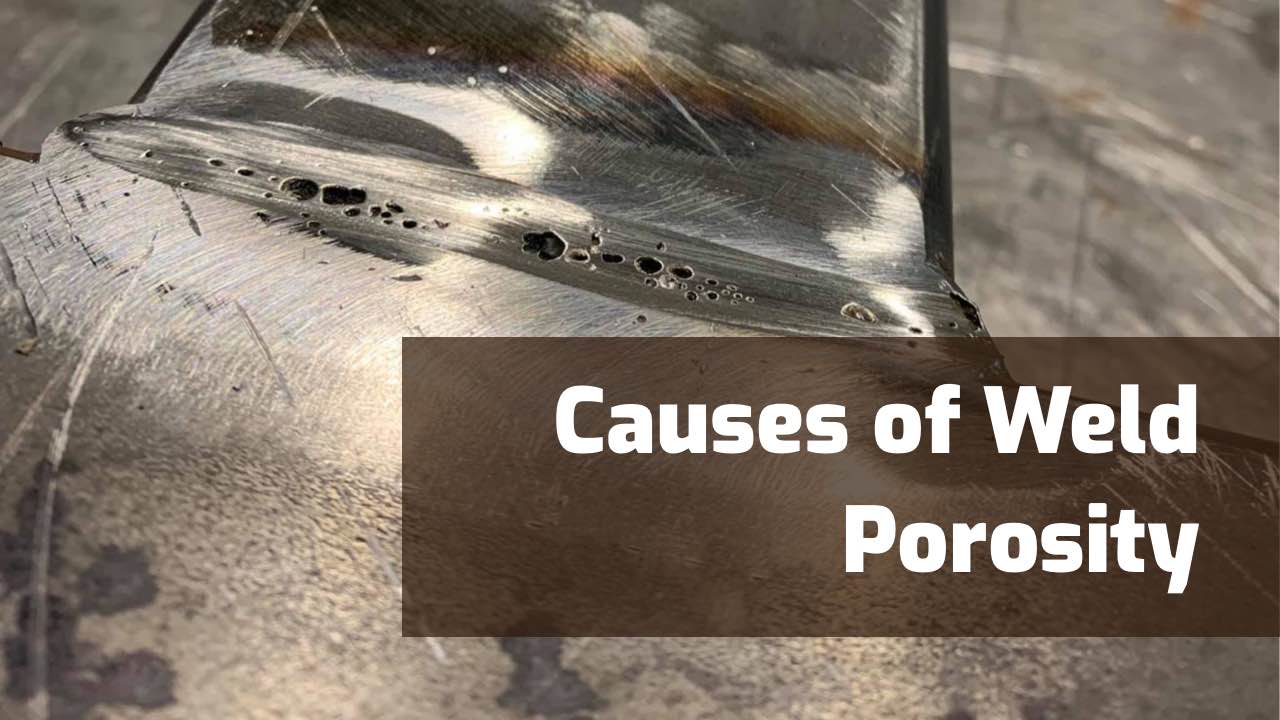MIG welding is a great technique for welding metals together. However, it can also cause porosity in the weld. Porosity can cause problems with the weld, such as decreased strength and durability. There are several causes of porosity in MIG welding and solutions. Let’s find out with us!
What is welding porosity?
Porosity in welding is a term used to describe the presence of small cavities or holes in a welded joint. These cavities are typically caused by gas bubbles getting trapped in the molten metal during the welding process.
Porosity can be a serious issue in welding because it weakens the integrity of the weld and can cause it to fail under stress. Porosity can also cause cosmetic issues, such as rough or pitted surfaces, and can make the weld more prone to corrosion.
There are several factors that can contribute to porosity in welding, including improper shielding gas, contaminated filler material, poor weld preparation, and improper welding technique. Welders must take care to avoid these factors and follow proper welding procedures to minimize porosity and ensure a strong, durable weld.
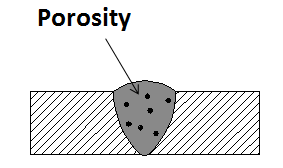
The 5 Most Common Causes of Porosity in MIG Welding
1. Contaminated Base Material
Contaminated base material can be a significant cause of welding defects, including porosity. Contaminants such as oil, grease, dirt, rust, and other debris can become trapped in the weld during the welding process, leading to voids or porosity.
Some common sources of contamination include the presence of lubricants or cutting fluids used in the manufacturing or machining process, oxidation or corrosion of the base material, and residues left from cleaning or handling the material.
2. Shielding Gas Problems
Shielding gas is a critical component in welding, as it serves to protect the weld from contamination by atmospheric gases that can cause porosity and other defects. However, problems with shielding gas can occur, leading to a variety of issues in the welding process. Some common shielding gas problems include:
Insufficient gas flow can cause porosity, as the weld is not adequately protected from atmospheric gases. It can also cause inconsistent weld quality and undercutting. Using the wrong shielding gas composition for the welding process can lead to porosity, reduced weld quality, and other defects.
Contaminated gas, such as gas containing water vapor, oil, or other impurities, can cause porosity, reduced weld quality, and even dangerous fumes. Leaks in the gas lines or equipment can cause inconsistent weld quality, porosity, and even dangerous situations if flammable gases are involved.
Inadequate gas coverage can lead to porosity and other defects in the weld. This can occur if the welder does not maintain a proper distance between the nozzle and the workpiece or if the gas flow is not properly directed.
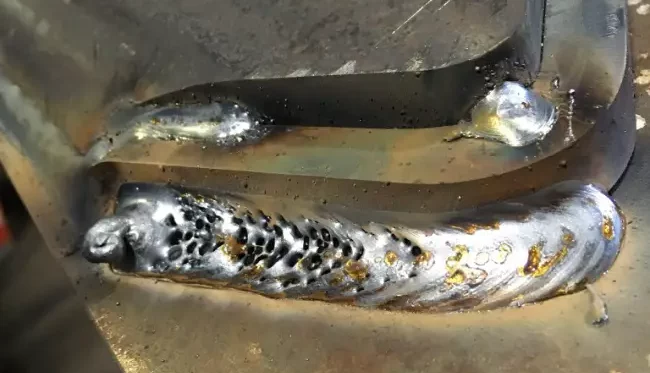
3. Moisture in Electrodes or Filler Material
Moisture in electrodes or filler material can be one of the common causes of porosity in MIG welding. Moisture can be absorbed by the filler material or electrodes from the atmosphere, and if not removed, can be released during welding, causing gas pockets or porosity in the weld.
The presence of moisture in the filler material or electrodes can cause several issues, including:
- Porosity: Moisture can be released in the form of gas during welding, which can create gas pockets or porosity in the weld.
- Hydrogen-induced cracking: Moisture can release hydrogen during welding, which can cause cracking in the weld.
- Reduced strength and ductility: Moisture can reduce the strength and ductility of the weld, leading to a weaker joint.
4. Mechanical Problems
Mechanical problems can also contribute to porosity and other welding defects. Mechanical issues with the welding equipment or the welding process itself can result in improper weld formation, which can lead to porosity and other defects.
Some common mechanical problems that can cause porosity include:
- Insufficient shielding gas flow: If the shielding gas flow rate is too low, there may not be enough gas coverage to protect the weld from atmospheric contamination, resulting in porosity.
- Incorrect welding wire feed rate: An incorrect wire feed rate can lead to insufficient penetration of the weld, resulting in porosity.
- Improper joint fit-up: If the joint fit-up is incorrect or not tight enough, it can result in inadequate penetration of the weld and the formation of porosity.
- Welding gun or torch positioning: Improper positioning of the welding gun or torch can result in inconsistent heat input and insufficient fusion between the base material and the filler material, leading to porosity.
5. Improper Welding Technique
Improper welding technique can be one of the common causes of porosity in MIG welding. Poor welding technique can result in an insufficient penetration of the weld or a poor fusion between the base material and the filler material, leading to porosity, cracking, and other defects.
Some common causes of porosity due to improper welding technique include:
- Inconsistent Arc Length: An inconsistent arc length can cause an inconsistent heat input, leading to insufficient penetration and poor fusion between the base material and filler material.
- Incorrect Travel Speed: An incorrect travel speed can lead to an insufficient heat input, resulting in poor fusion between the base material and filler material.
- Incorrect Electrode Angle: An incorrect electrode angle can cause the filler material to be deposited too shallow or too deep, resulting in an inconsistent weld bead profile and insufficient fusion between the base material and filler material.
- Poor Joint Preparation: Poor joint preparation can result in an inadequate penetration of the weld, leading to a weaker joint and the possibility of porosity.
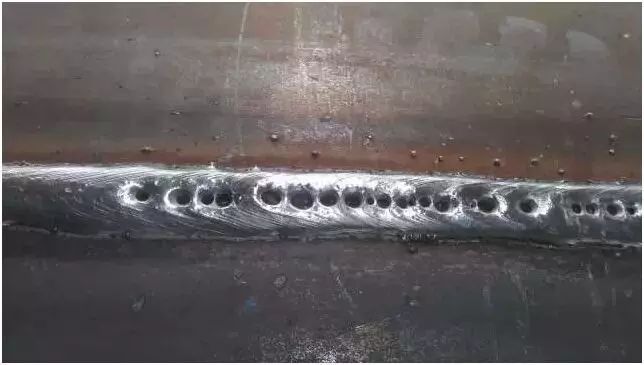
Solutions to overcome porosity in MIG welding
1. Contaminated Base Material
To prevent contamination from affecting the welding process, it’s essential to properly clean and prepare the base material before welding. This may include using solvents, degreasers, or other cleaning agents to remove any oils, grease, or other contaminants from the surface of the material. It’s also important to remove any rust or corrosion that may have formed on the surface of the material.
Additionally, it’s essential to properly store and handle the material to prevent contamination from occurring after cleaning. The material should be protected from exposure to moisture, dust, and other debris that can collect on the surface and cause defects during welding.
By taking these steps to properly clean and prepare the base material, welders can reduce the risk of contamination and improve the quality and integrity of the weld.
2. Shielding Gas Problems
To prevent shielding gas problems, it’s important to ensure that the gas flow rate and composition are appropriate for the welding process, and that the gas is free of contaminants. It’s also essential to check for gas leaks in the equipment and to maintain adequate gas coverage over the weld area. Regular maintenance and inspection of the welding equipment can help to prevent these issues from occurring.
3. Moisture in Electrodes or Filler Material
To prevent these issues, it’s important to properly store and handle the filler material and electrodes to prevent moisture absorption. This may include storing the material in a dry location and using airtight containers to prevent exposure to moisture in the atmosphere.
Before use, the filler material or electrodes should be dried to remove any moisture that may have been absorbed. The drying process typically involves heating the material in a controlled environment to evaporate any moisture.
Welders should also be aware of the manufacturer’s recommendations for storage and handling of filler material and electrodes and take care to follow these guidelines to prevent moisture-related defects in welding.
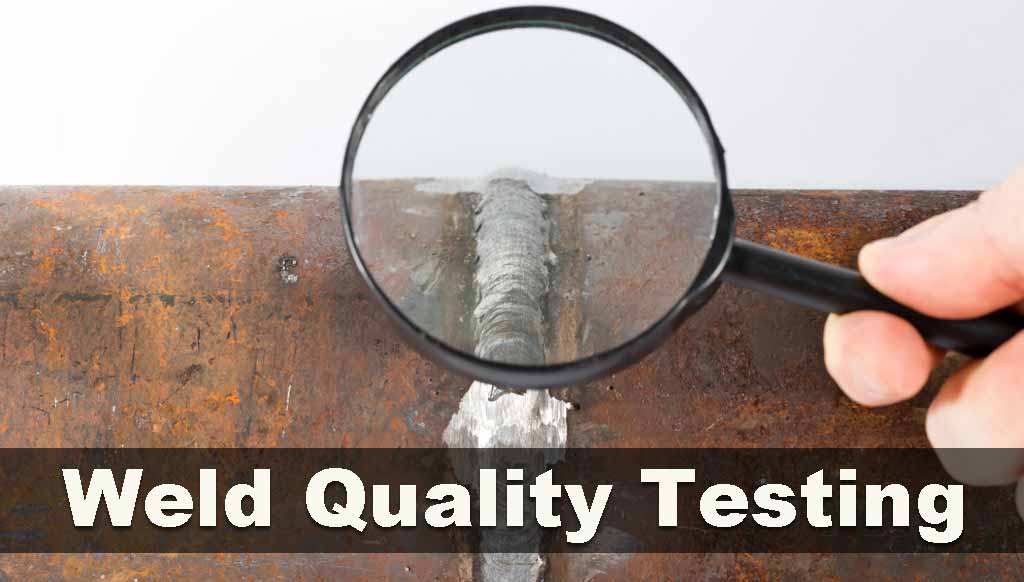
4. Mechanical Problems
To prevent porosity due to mechanical problems, welders should ensure that the welding equipment is properly set up and maintained. This may include regularly inspecting the equipment for damage or wear and ensuring that the shielding gas flow rate and wire feed rate are set correctly.
Welders should also be properly trained on the correct welding techniques and should follow established welding procedures for the specific welding process and material being welded. By taking these steps, welders can produce high-quality welds with minimal porosity and other defects.
5. Improper Welding Technique
To prevent porosity due to improper welding technique, welders should be properly trained on the correct welding techniques and should follow established welding procedures for the specific welding process and material being welded.
They should also ensure that the base material and filler material are properly prepared and that the welding equipment is properly set up and maintained. By taking these steps, welders can produce high-quality welds with minimal porosity and other defects.
Final Thoughts
The causes of porosity in MIG welding and the solutions to this problem are dependent on the type of porosity. If the porosity is caused by gas, oil, or dust particles, then the best solution is to use a higher-quality shielding gas. If the porosity is caused by impurities in the weld metals, then the best solution is to clean the weld metals and weld them together using a higher-quality filler metal.

